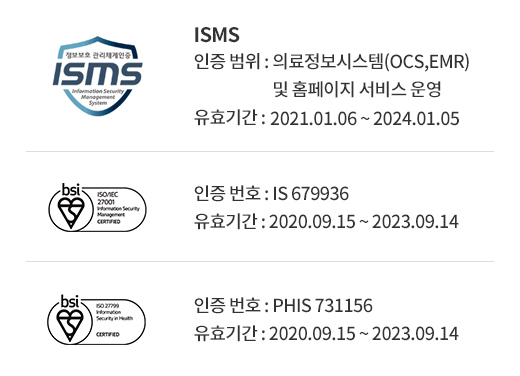Dr. Answer 2.0 aims to showcase Korea’s medical AI progress worldwide

Since its inception in 2021, Korea's ambitious Dr. Answer 2.0 project has brought together 30 hospitals and 19 Information and Communication Technology (ICT) companies in a consortium to elevate the standard of artificial intelligence (AI)-based medical services in Korea to a global level, improving national health and quality of life while reducing healthcare costs.
This collaboration, supported by the Ministry of Science and ICT and the National IT Industry Promotion Agency, has facilitated the development of 24 AI software medical devices targeting a wide range of diseases, including gastric cancer, depression, skin diseases, diabetes, lung cancer, pneumonia, prostate hyperplasia, liver cancer, stroke, liver disease, hypertension, and thyroid cancer.
The Dr. Answer 2.0 task force is now in its crucial fourth year, focusing on clinical trials and obtaining medical device approvals to integrate these AI solutions into actual medical settings. The project has also generated significant international interest.
Highlights include positive receptions at major health conferences, such as the HIMSS 2023 APAC Health Conference & Exhibition in August of last year and the HIMSS 2024 Europe Health Conference & Exhibition in May of this year. These events showcased Korea's AI capabilities to other nations and garnered acclaim.
_3.jpg)
SNUBH Professor Lee Ho-young, the new head of the Dr. Answer 2.0 project, explains the importance of the project during an interview with Korea Biomedical Review at the hospital in Bundang-gu, Seongnam, Gyeonggi Province, last Thursday. (Credit: SNUBH)
In light of these developments, Korea Biomedical Review recently interviewed Professor Lee Ho-young of the Department of Nuclear Medicine from Seoul National University Bundang Hospital, who has newly taken over as the head of the Dr. Answer 2.0 task force this June.
Professor Lee's insights reveal a promising future for AI in healthcare in Korea and across the global medical landscape. "One of the major advancements in Dr. Answer 2.0, compared to its predecessor Dr. Answer 1.0, is the inclusion of the entire lifecycle of healthcare AI services, from initial design to regulatory approval," Lee said. "This comprehensive approach is a strategic shift from the earlier phase, which focused primarily on design and testing within existing frameworks."
The project's move to a more inclusive and thorough process also addresses interactions with regulatory bodies, ensuring the AI software meets stringent medical standards, he added.
Lee also emphasized the practical applications of the project's AI software, particularly in diagnosing and managing diseases in primary care settings and specialized hospitals. "One of the significant achievements of Dr. Answer 2.0 is its direct impact on medical practices, particularly in primary care settings," he said. "We have developed AI software tailored for primary clinics, which typically lack resources like X-ray machines.:
For example, while pneumonia diagnosis relies on patient symptoms and tests other than X-rays, a software developed through the project enables accurate assessments in settings without advanced imaging technology, Lee added. Lee stressed that such developments are crucial for enhancing access to medical diagnostics in underserved areas, thus broadening the scope of who can benefit from advanced AI tools. He also shed light on other innovative products nearing completion, such as a stroke diagnosis tool developed by Asan Medical Center.
"This software is designed to estimate the onset time of a stroke based on MRI images, which is vital for timely and effective treatment, especially when the patient is unconscious upon arrival at the emergency room," he said. "This can significantly improve outcomes by ensuring patients receive the most appropriate intervention within the critical 'golden hour' following a stroke."
Lee further discussed the broader applications of AI across various stages of disease management, from prediction and diagnosis to treatment and prognosis. "Our approach in Dr. Answer 2.0 isn't limited to image analysis as we are integrating diverse data from electronic medical records (EMR) using multi-modal AI models to enhance the depth and accuracy of our diagnostics," he said. "This holistic use of AI technology helps in processing unstructured data and provides a more comprehensive analysis, enabling healthcare providers to make better-informed decisions."
Addressing regulatory challenges, Lee highlighted significant progress in aligning the project's goals with both domestic and international standards. "We've had extensive discussions with regulatory bodies to ensure that our software meets the highest standards of medical device certification, which has been crucial for deploying these tools effectively across different regions," he explained.
Looking to the future, Lee is optimistic about the project's potential to facilitate international expansion for Korean medical AI technologies.
"The project already plans to validate its clinical effectiveness through local and international trials," Lee said. "A notable collaboration involves cross-validation discussions with Singapore's National University Hospital (NUH) focusing on gastric cancer, pneumonia, liver cancer, and thyroid cancer."
Finally, as the newly appointed head of Dr. Answer 2.0, Professor Lee outlined an ambitious roadmap for the project's future. "The immediate objective is to ensure that our software passes all regulatory hurdles and achieves certification," Lee said. "This is crucial for both domestic use and international validation." The second aim is to support the companies involved in the project to succeed locally and make significant strides on the international stage, he added.
Professor Lee also highlighted the invaluable experience gained by researchers and developers over the past four years, which he believes will lay the groundwork for future innovations in AI software.
"The know-how developed through this cycle from development to approval will serve as a foundation for creating even more advanced AI solutions that can contribute significantly to public health," he said. Addressing the government, Lee voiced the need for more robust support, particularly for the smaller companies involved in Dr. Answer 2.0. "Many of the companies participating in Dr. Answer 2.0 are relatively small and would benefit greatly from governmental interest and regulatory support," he said. "This would not only aid their growth but also expedite the overall advancement of our healthcare system."
Source: https://www.koreabiomed.com/news/articleView.html?idxno=24394






